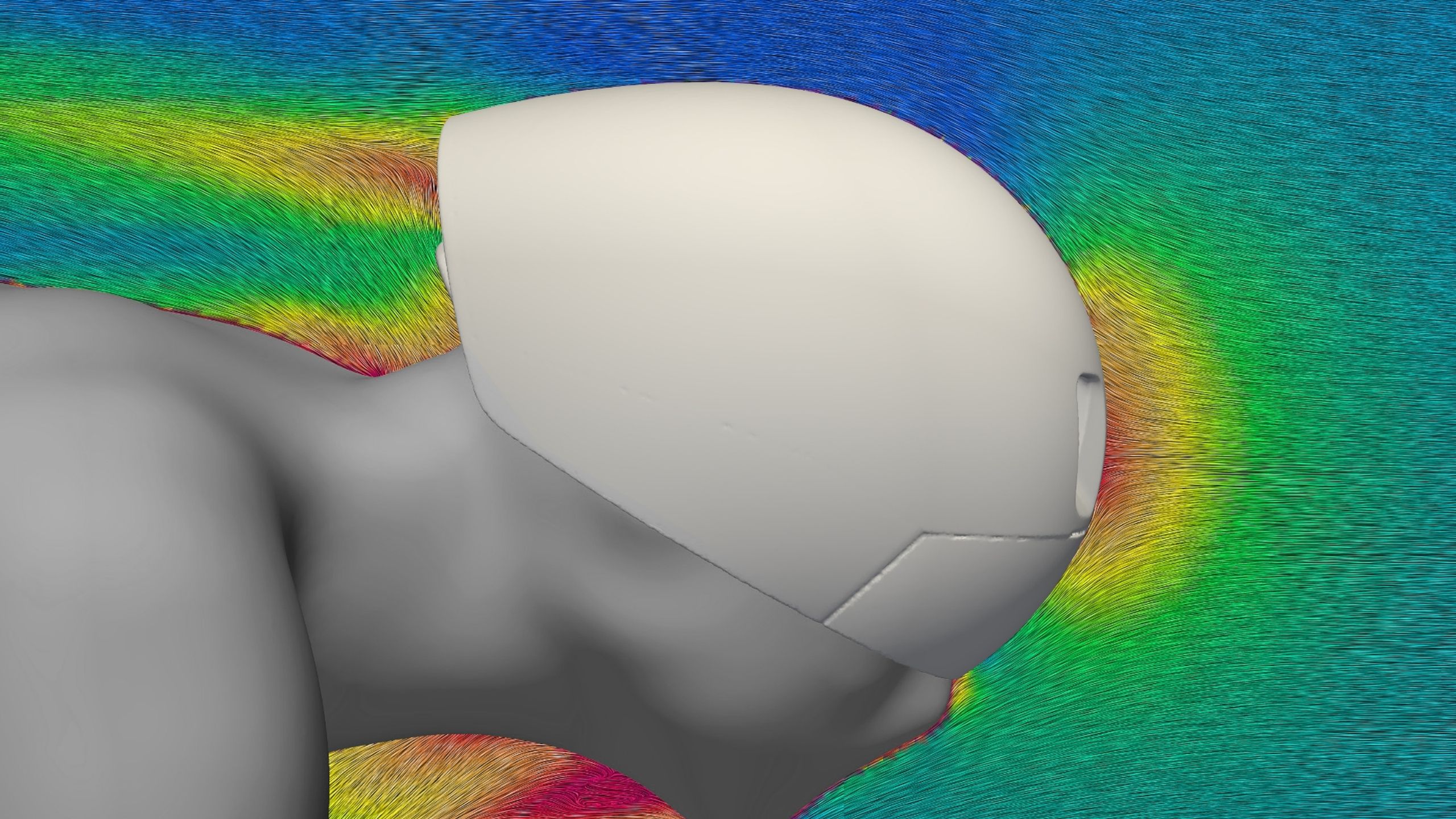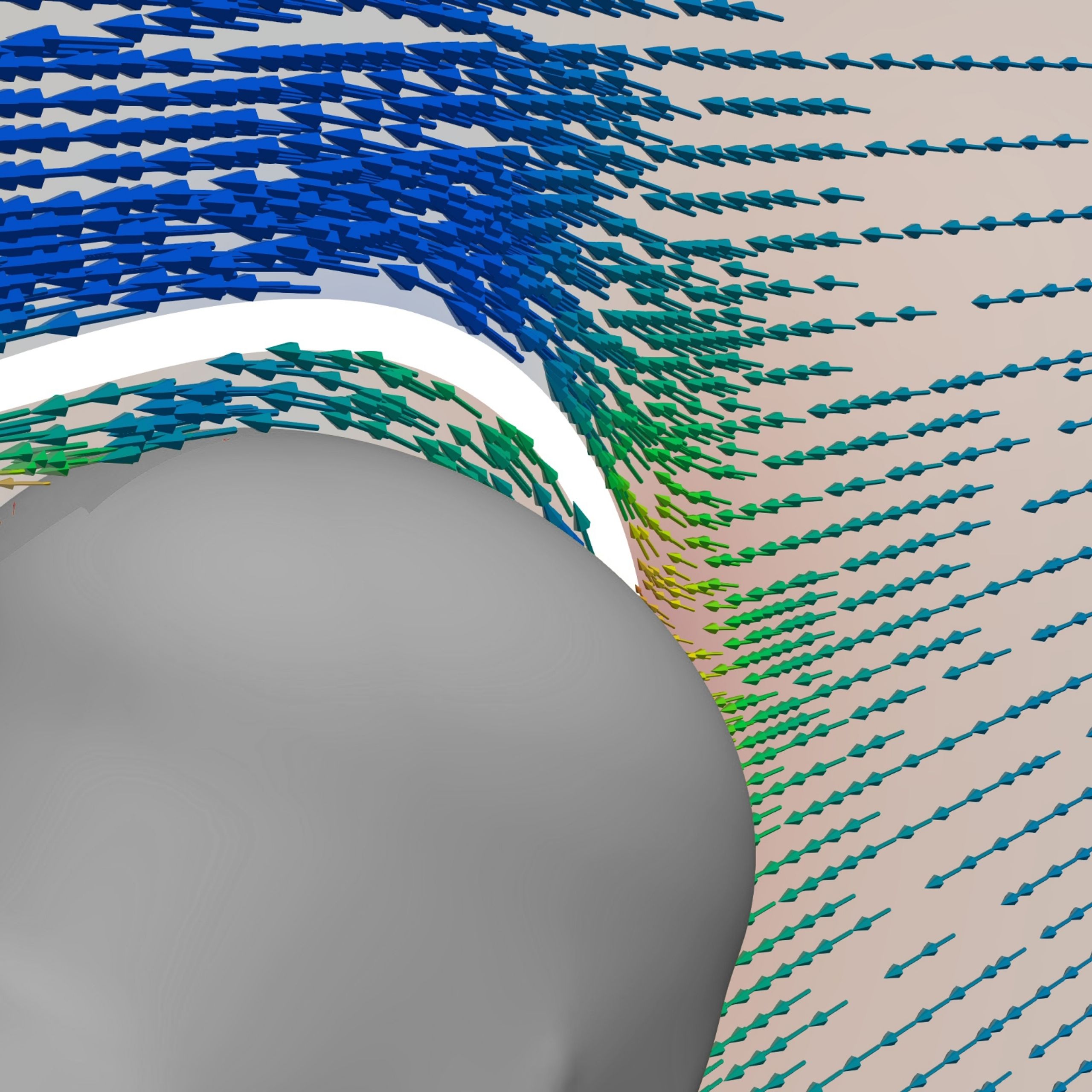Designing the race-winning Procen Air
Alberto Bettiol fired off the front of the peloton, tucked his shoulders low behind his new POC Procen Air, and soloed to victory at Milano-Torino.
EF Pro Cycling Head of Performance, Peter Schep was jubilant. At the finish, Alberto’s advantage over his chasers was just seven seconds. He had ridden alone for over 30 kilometers. Peter knew from years’ of wind-tunnel testing and close development work with POC’s engineers that Alberto’s new Procen Air had played a decisive role in his win.


Alberto had averaged 46.5 km/hr during his solo. According to Peter’s calculations, Alberto’s Procen Air had allowed him to cover the distance well over ten seconds faster than he would have had he worn his already fast POC Ventral. The real triumph for Peter was that the Procen Air had exceeded the demands of a warm 177-km classic.
“It is a really fast helmet,” Alberto said after his win. “It looks like a TT helmet, but it is not, because with the Procen Air, POC adapted a TT helmet for road racing. It meets all of the regulations from the UCI. The evidence from the wind tunnels and stuff is really great, but at the same time POC kept the safety as the first thing, so you can still be sure that you have a helmet that will protect you from anything.”

EF Education-Cannondale had already proven that the Procen Air was fast. From Noemi Rüegg’s high-speed sprint win at the Trofeo Felanitx-Colònia de Sant Jordi to Kristen Faulkner’s 50-km solo win at the Omloop van het Hageland to Kim Cadzow’s GC victory at the Trofeo Ponente in Rosa, our women’s squad had already won seven races with the Procen Air. Their results reinforced data that POC and EF Pro Cycling’s performance team had collected in the wind tunnel and during on-track tests. For close to two years, our team had been working with POC on the Procen Air design, refining its construction using 3D modeling software borrowed from the aerospace industry before sending prototypes to EF Pro Cycling riders to test in secret on the road.
“We had a huge number of meetings together, led on our side by Sports Director and Technical Operations and Commercial Manager Andreas Klier and myself and a whole range of people from POC, from engineers to designers to aerodynamicists,” Schep says. “In those meetings, we were constantly running ideas by each other to try to develop the design further. We made trips to Sweden and Girona and the windtunnel at Silverstone. It was a super fine collaboration.”


The challenge wasn’t just to make a faster helmet. The Procen Air had to help riders perform better in a dynamic, fast-moving peloton and protect them if they crashed.
“Impact wise, we know how we can make a safe helmet,” says POC engineer Magnus Gustavsson. “The structure is the structure that we know works. Here it was more about being on the bike, in the peloton, where you have a lot of things happening around you. With the Procen Air, our mission was to create a helmet that had the watt savings of a TT helmet, but without sacrificing safety, and especially riders’ ability to hear and see.”
In a peloton, hearing is often a cyclist’s first warning system. A racer’s spatial awareness depends on their ability to perceive sound, especially when other riders are coming up from behind them in the pack, outside the range of their peripheral vision.
When they were working with EF Pro Cycling riders to develop the Procen Air, POC’s engineers experimented with a range of prototypes, moving the ear flaps on the helmet up and down a few millimeters at a time until they found the perfect balance between aerodynamic and auditory performance. By reducing wind interference, the final design of the helmet actually allows riders to hear better than they could if they were wearing a standard road helmet.

CFD image showing air flow and pressure zones.
The same is true for vision. The Procen Air’s Clarity lens is engineered to provide high-definition optics, so riders can see their surroundings better than they could with their bare eyes.
“The color curve of the lens is very specific to pulling out road features,” Gustavsson says. “Performance is often a matter of very, very marginal differences that make a big impact when you add them up. That is the case here. For the Procen Air, we adjusted the color curve for the environment riders face. It is a high-contrast lens that ensures better visibility on gray asphalt roads.”
The Procen Air’s lens wraps around the front of the helmet, providing an unbroken field of vision. The helmet also features a magnetic clip on the rear of the helmet, where riders can place the lens if they want to remove it, for instance on a hot climb.
Powerful airflow through the Procen Air is another key feature that POC built into the helmet. Overheating diminishes a rider’s on-road awareness and their ability to make good, fast decisions in a race, so it is crucial for them to keep cool. This was actually the main factor that obstructed racers from wearing more aerodynamic helmets in the past, until POC overcame it with its design for the original Procen TT helmet.
Using data from advanced Computational Fluid Dynamics (CFD) modeling and 3D body scans of EF ProCycling riders, POC’s engineers introduced three-large vents into the front of the first Procen. Those vents pull air into the helmet, providing whole head cooling and increasing speed. That is thanks to the Venturi effect.


CFD image of internal air flow and the Venturi effect.
“When you take a big volume of air and move that into a smaller channel you create a higher speed inside these channels, so the air is actually flowing faster compared to the airflow on the outside of this helmet,” Gustavsson explains. “This disrupts the area of stagnant air that would otherwise form around the helmet and improves the overall aerodynamics.”
During the development process for the original Procen helmet, which was designed for TTs, Schep realized that it was now possible to take the aero gains realized in that helmet to road racing, because of those vents.
“We had already been looking for a while at ways to make a faster helmet,” he says. “The aero gains from time trial helmets were clear. Then we developed the technique to allow more airflow through an aerodynamic helmet and thought, ‘Hey! This is going to solve a lot of our limitations.’ At that point, we could quickly switch into gear. POC embraced the challenge. It was then just a matter of fine tuning to make sure that a rider would be adequately cooled and would hear and see well, so they could know what was happening behind them and around them, so it wouldn’t be dangerous. For POC, safety is always number one. With that in mind, we were able to develop this helmet. It is certainly significantly faster.”


The Procen Air is not just faster in a straight line either. Road racing is much more dynamic than time trialing. During a TT, riders will strive to stay in the same aerodynamic tuck for the duration of their race. In a road race, riders’ bodies are constantly moving, as they sprint out of corners, swivel their heads to find teammates in the bunch, stand on the pedals, and rip down descents.


Extensive wind-tunnel testing and 3D modeling with EF Pro Cycling riders in different positions helped POC develop an aerodynamic shape for the Procen Air that balances all of the demands of the sport. When EF Pro Cycling’s riders saw the data from those tests, they were convinced. Our team has always been happy to break with convention to go fast.
“As soon as the riders saw the numbers, everyone wanted to wear the helmet,” Schep says.
Alberto’s victory at Milano-Torino was one more data point.
“I was alone in front for a long time and had to keep a really aero position,” Alberto says. “My Procen Air gave me a huge advantage. For sure, I want to wear it more!”
Now, you can, too.
Photos by: Getty Images, Sprint Cycling Agency, Jojo Harper, Dan King & Grubers

CFD simulation and testing
Competitive cyclists optimize every pedal stroke to deliver pure forward motion. Several details need to align to create precise forward motion on a bike, such as fitness, power, and technique, all of which are basic building blocks to building speed.

Lachlan Morton wins the 2024 unbound gravel
Our Aussie gravel star makes it fourth time lucky in Emporia UNBOUND Gravel was the race that started it all for Lachlan Morton back in 2019 when it was still part of his “alternative calendar.” It was the race that saw him shift focus from road to gravel and new pursuits, and it’s been the race that’s eluded him as well. No more.

Considered Performance
In developing the Elicit Ti, we sought to find a way to deliver all the benefits needed to stay at the cutting edge of performance cycling while being considerate of the resources we use.

The new chamois project
As a cyclist, the chances are that the subject of cycling saddles and discomfort has been raised many times. Unusually, it is a topic that interests cycling friends and non-cyclists alike, with the latter especially intrigued with how modern cycling can develop products that seemingly make you more uncomfortable!